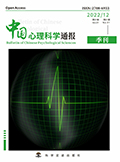

为了加强对职业院校学生心理健康水平的探究, 了解学生心理健康的总体状况。本研究对550名职业院校的学生进行调查, 研究主要采用SCL-90测量工具进行心理健康测试, 建立潜在剖面模型。通过SPSS、MPLUS分析, 研究发现, 高职院校学生心理健康水平相对较好, 心理健康水平高于全国常模, 但两极分化严重, 即心理异常学生的得分较高。在各个维度的检测中发现, 阳性因子较多的维度主要集中在: 强迫症状、人际敏感、抑郁三个方面。通过潜在剖面模型的分析, 发现学生的心理健康水平可以分为三个类别: “轻微问题组”“潜在问题组”和“高问题组”, 各个组别间差异明显, 学生的心理健康水平主要集中在“轻微问题组”。因此在高职院校的心理健康工作中, 需要开展日常宣传教育工作, 提升整体心理健康素养。同时加强对重点学生的监督工作, 开展追踪分析, 建立个人心理档案, 促进家校联动。
In order to strengthen the level of vocational college students' mental health research, and to understand the overall situation of students' mental health, this study investigated 550 vocational college students. The study mainly used the SCL-90 measurement tool to conduct a mental health test and establish the potential profile model. Through the analysis of SPSS and MPLUS, the study found that the mental health level of students in vocational college was relatively good, with higher levels of mental health than the national norm, but with serious polarization, i. e. higher scores for students with psychological abnormalities. In each dimension of the test, it was found that the dimensions with more positive factors were more mainly focused on: obsessive-compulsive symptoms, interpersonal sensitivity and depression. Through the analysis of the potential profile model, it was found that the mental health level of students could be divided into three categories: “Mildly problematic group”, “Potentially problematic group” and“Highly Problematic Group”, the mental health level of the students mainly concentrated in the“Minor problem group”. The differences between the groups are obvious, and students' mental health levels are mainly concentrated in the “mild problem group”. Therefore, in the mental health work of higher vocational colleges, it is necessary to carry out daily propaganda and education to improve overall mental health literacy. At the same time, we need to strengthen the supervision of key students, carry out tracking analysis, establish personal psychological files, and promote home-school interaction.